In pictures (1) – The towers of La Sagrada Familia in Barcelona
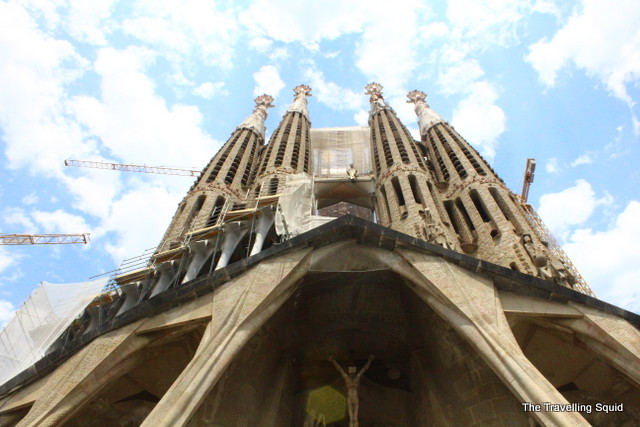
To any first time visitor to Barcelona, La Sagrada Familia is a must-go. I could safely say that its towering pillars resemble no other church in the world. The design is said to be inspired by natural elements, such as trees, (hence the rounded towers) and the intricately crafted shapes to represent a forest canopy (the ceiling) and the mountains. You can find these designs in both the interiors and exteriors of the basilica. (In case you’re wondering what is a basilica – it’s an important church which has been given special ceremonial rights by the Pope).
According to Wikipedia, La Sagrada Familia is a large Roman Catholic church designed by Catalan architect Antoni Gaudí (1852–1926). Although it is still incomplete, the church is a designated UNESCO World Heritage Site.

A little bit of History:
Construction of Sagrada Família started in 1882 and Gaudí became involved the year after. He devoted his last years to the project, and at the time of his death at age 73 in 1926 less than a quarter of the project was complete.
Sagrada Família’s construction progressed slowly, as it relied on private donations and was interrupted by the Spanish Civil War, only to resume intermittent progress in the 1950s. It has an anticipated completion date of 2026, the centenary of Gaudí’s death.
A conflict of interest?
The basilica has a long history of dividing the citizens of Barcelona over these three points.
The first being over the initial possibility it might compete with the Barcelona’s Cathedral (this is located at the Gothic Quarter). The second over Gaudí’s controversial designs – the possibility that work after Gaudí’s death disregarded his original design and lastly, the recent proposal to build an underground tunnel of Spain’s high-speed rail link to France which could affect its stability.
Describing Sagrada Família, art critic Rainer Zerbst said, “It is probably impossible to find a church building anything like it in the entire history of art” and Paul Goldberger called it, “The most extraordinary personal interpretation of Gothic architecture since the Middle Ages.”
However, famous author George Orwell begged to differ. These were his comments:
A modern cathedral and one of the most hideous buildings in the world… I think the Anarchists showed bad taste in not blowing it up when they had the chance.
Curious to see why La Sagrada Familia was mired in controversy? Scroll down..
Here are how the towers of La Sagrada Familia in Barcelona look like, from the outside:
There are three facades to the basilica. The Nativity, Passion and Glory Facade. The Glory Facade is under construction and is not opened to the public at the time we were there.
Nativity Facade
The Nativity Facade is said to be the artistic pinnacle of the building, mostly created under Gaudí’s personal supervision. At the Nativity Facade, you can find sculptures of an ox, an ass, the shepherds and kings, and angel musicians. Apparently, 30 different plant species from Catalonia were included as part of the sculpture, and the faces were taken of plaster casts done of local people.
Check out this Lonely Planet article for more information. It’s a helpful resource : )
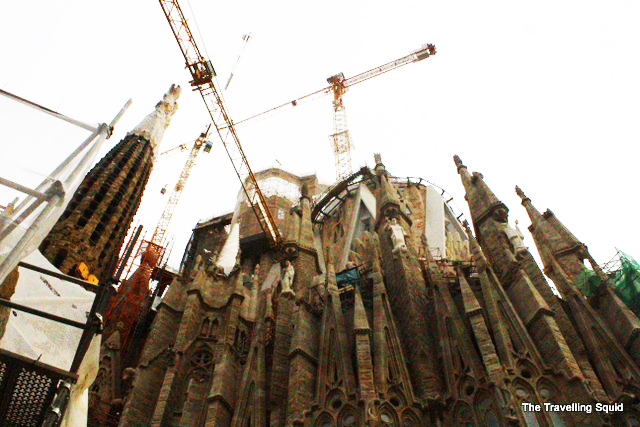

Just in case you’re wondering what do the spires (short conical towers) represent, Gaudí’s original design calls for a total of eighteen spires, representing in ascending order of height of the Twelve Apostles, the Virgin Mary, the four Evangelists and, tallest of all, Jesus Christ. Eight spires have been built as of 2010, corresponding to four apostles at the Nativity façade and four apostles at the Passion façade.
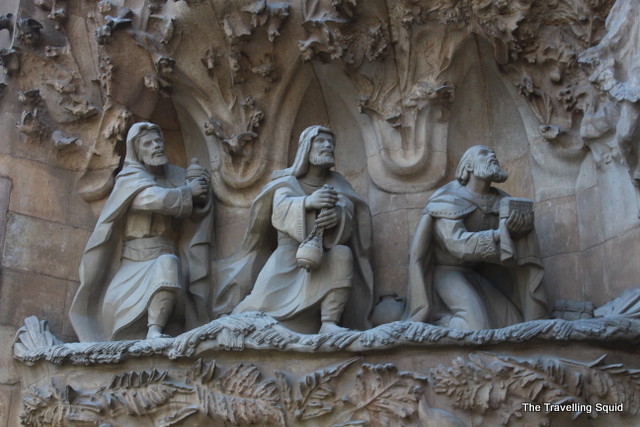
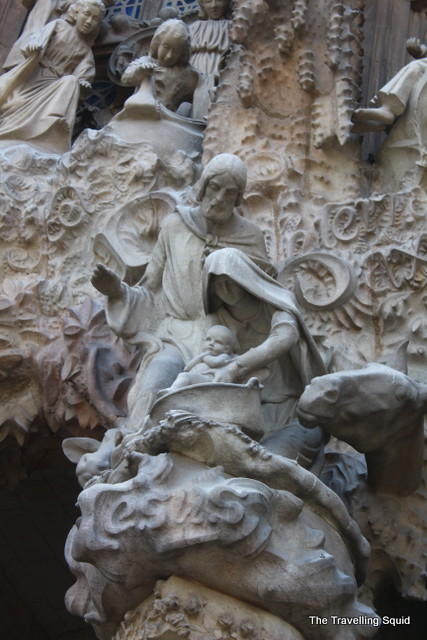
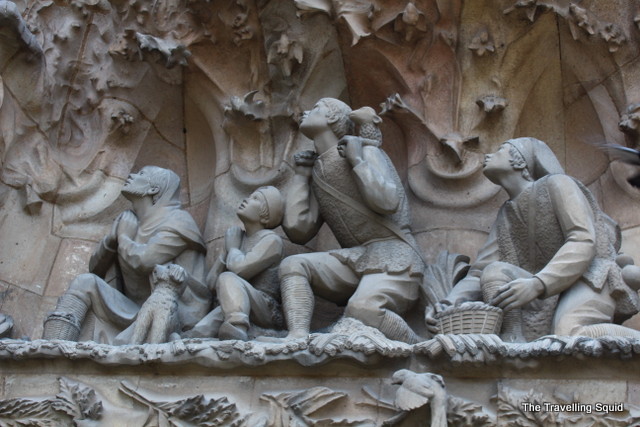
Passion Facade
The Passion Facade is based on the theme of Christ’s last days and death. The sculptor, Josep Subirachs, worked on its decoration from 1986 to 2006. He did not attempt to imitate Gaudí, rather producing angular, controversial images of his own (see below). The main series of sculptures is in an S-shaped sequence. It starts with the Last Supper at the bottom left and ending with Christ’s burial at the top right.
Once again, check out this Lonely Planet article if you would like to know more.
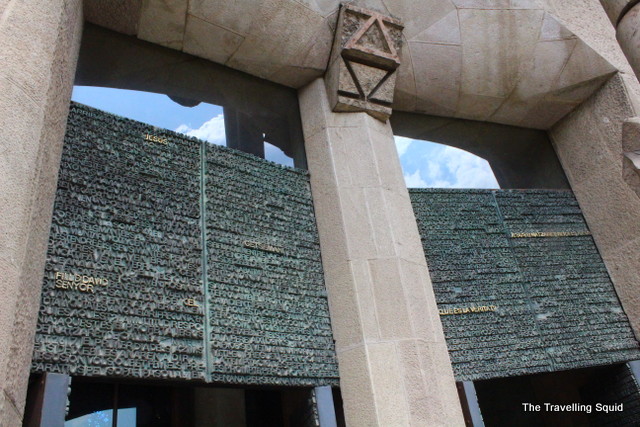
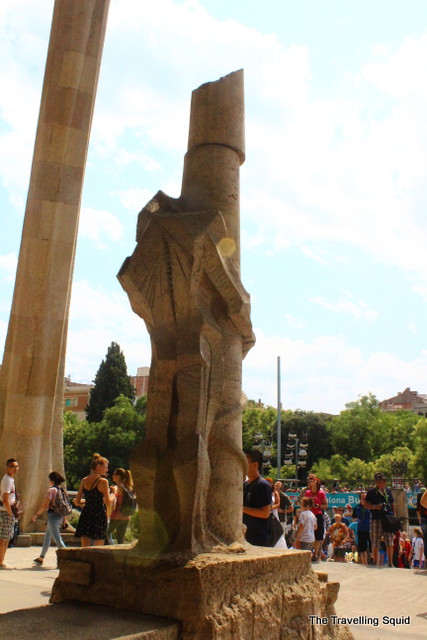
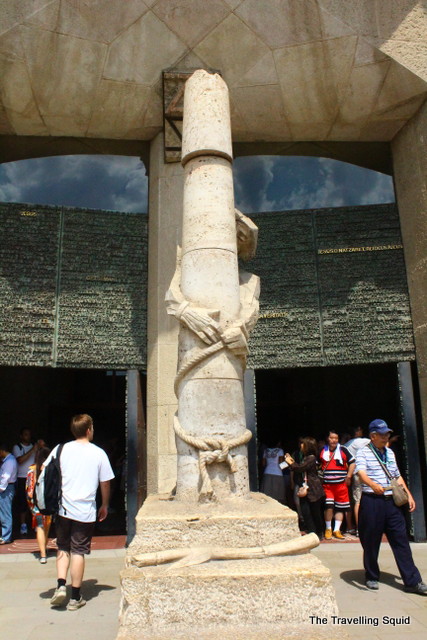 At the Passion Facade – This is by far the most emotive statue I had ever come across.
At the Passion Facade – This is by far the most emotive statue I had ever come across.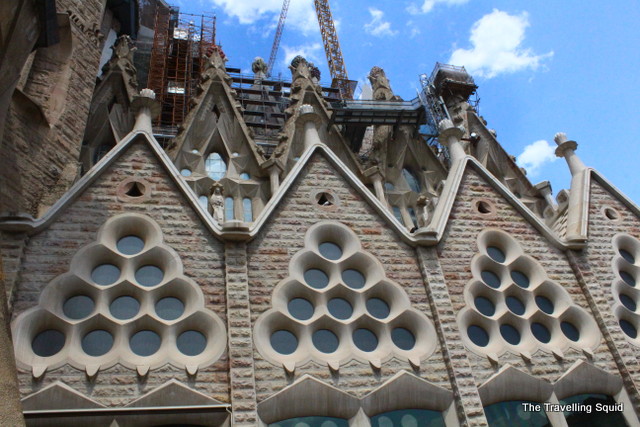
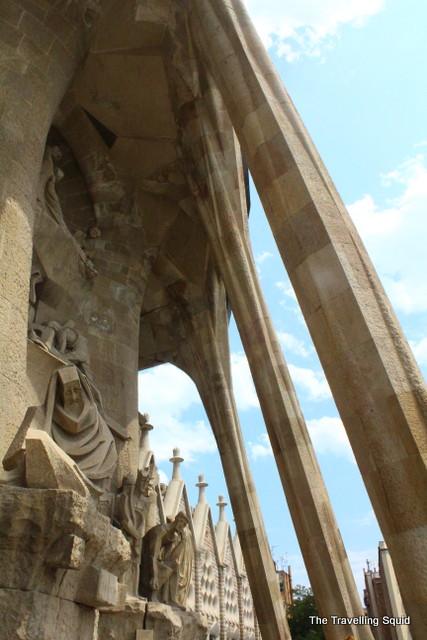
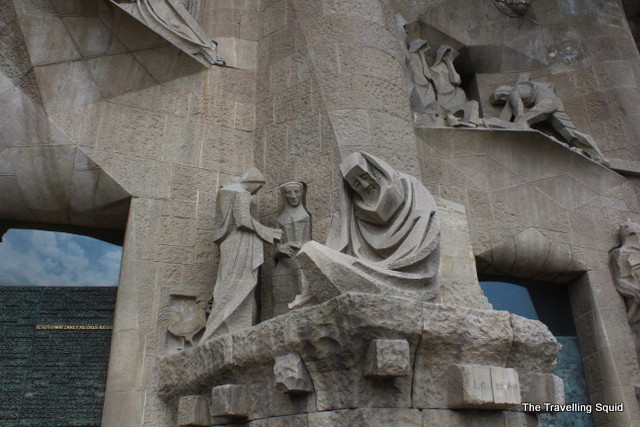
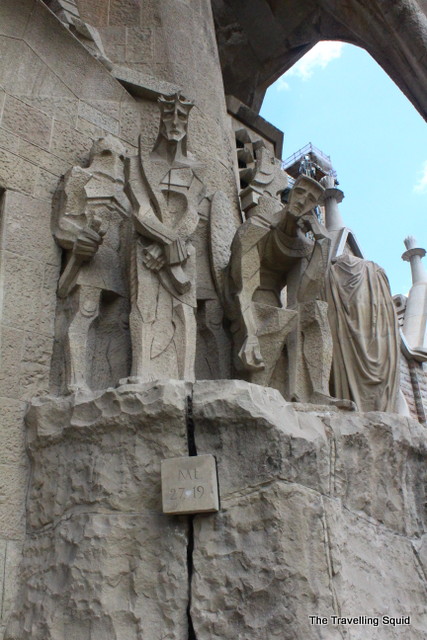
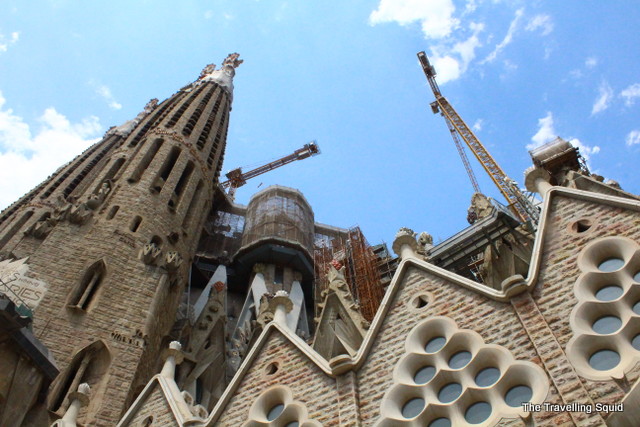
Have you been to La Sagrada Familia? Do you share George Orwell’s sentiments that it was built in poor taste? Or are you part of legions of fans who had nothing but compliments for it?
The Travelling Squid’s Take
I found La Sagrada Familia to be rather charming, being very different from the other churches I have been to in Europe. Being the nature lover I am, I also liked how it was inspired by trees and living things. (That being said, I must highlight that it doesn’t look that nice as a Pandora charm. Heard that they were discontinuing designs for it. ; )
Watch this space for more the next post on ‘The interior of La Sagrada Familia and how to get there ‘.

Leave a Reply